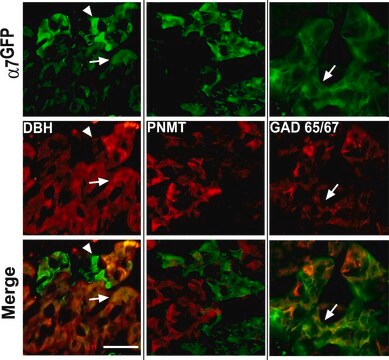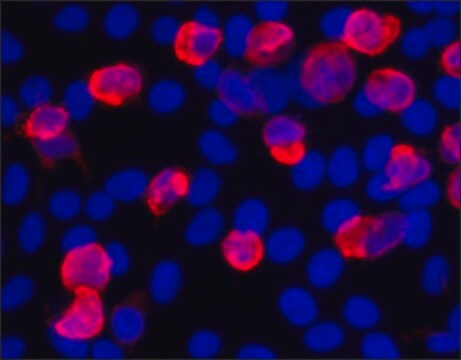G2781
Anti-Glutamine Synthetase antibody produced in rabbit
IgG fraction of antiserum, buffered aqueous solution
Sinônimo(s):
Glutamine Synthetase Antibody, Glutamine Synthetase Antibody - Anti-Glutamine Synthetase antibody produced in rabbit
About This Item
Produtos recomendados
fonte biológica
rabbit
Nível de qualidade
conjugado
unconjugated
forma do anticorpo
IgG fraction of antiserum
tipo de produto de anticorpo
primary antibodies
clone
polyclonal
Formulário
buffered aqueous solution
peso molecular
antigen 45 kDa
reatividade de espécies
rat
embalagem
antibody small pack of 25 μL
técnica(s)
immunohistochemistry (formalin-fixed, paraffin-embedded sections): 1:10,000 using rat brain sections
microarray: suitable
western blot: 1:10,000 using rat brain cytosolic fraction
nº de adesão UniProt
temperatura de armazenamento
−20°C
modificação pós-traducional do alvo
unmodified
Informações sobre genes
human ... GLUL(2752)
mouse ... Glul(14645)
rat ... Glul(24957)
Descrição geral
Especificidade
Imunogênio
Gs (single amino acid substitution).
Aplicação
Immunoblotting: a minimum working antibody dilution of 1:10,000 is determined using a rat brain cytosolic fraction extract.
Immunohistochemistry: a minimum working antibody dilution of 1:10,000 is determined using formalin-fixed, paraffin-embedded sections of rat brain.
Ações bioquímicas/fisiológicas
forma física
Exoneração de responsabilidade
Não está encontrando o produto certo?
Experimente o nosso Ferramenta de seleção de produtos.
Código de classe de armazenamento
12 - Non Combustible Liquids
Classe de risco de água (WGK)
WGK 2
Ponto de fulgor (°F)
Not applicable
Ponto de fulgor (°C)
Not applicable
Escolha uma das versões mais recentes:
Já possui este produto?
Encontre a documentação dos produtos que você adquiriu recentemente na biblioteca de documentos.
Os clientes também visualizaram
Nossa equipe de cientistas tem experiência em todas as áreas de pesquisa, incluindo Life Sciences, ciência de materiais, síntese química, cromatografia, química analítica e muitas outras.
Entre em contato com a assistência técnica









